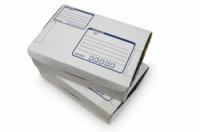Explain the equality of quotients to the tutors in an understandable way
Don't be afraid of math. The equality of quotients in proportional assignments can easily be explained. All that is needed is a simple example.

What you need:
- paper
- Pen
- (Eraser)
- Possibly. calculator
This is how you explain the equality of quotients
- Quotient equality occurs with the proportional Assignments on, a topic that the students mostly in the 7th grade. School year more or less takes up. In the past, this topic was simply called the rule of three.
- The rule of three is always about two quantities that are related to each other. Examples are the price and weight of a purchased product, the exchange rate between dollars and euros or the consumption of gasoline and the kilometers driven.
- If the first size increases (the weight of a product such as apples), the price also increases (the more you buy, the more you have to pay). Specifically, double or triple the amount results in double or triple the price (special offers left aside).
- To explain the equality of quotients in the rule of three, a particularly catchy example is important.
- Maybe you just stick to selling goods, take the apples and make a table with three columns, the last column being empty for now. On the left in the first column is the weight of the apples (in kg), on the right in the second column the price to be paid (in euros). Start this table with 1kg, 2kg, etc. You can also choose 1/2 kg or 7 1/2 kg. The price is calculated on the right. To do this, enter the price for 1 kg (e.g. 2.50 euros).
- On the basis of the table, you can initially explain the principle "the more - the more" and especially "double the amount - double the price" in an informal manner.
- Now comes the third column. Calculate the quotient of price and weight here, that is, divide the calculated price by the weight of the goods for each line of your table. And lo and behold: The quotients are all the same, in this case the price is even per kg.
- The equality of quotients can be practiced. For other proportional assignments, set up tables (examples above). Now do not (!) Enter the price for 1 kg (or 1 l, depending on what you choose), but any assignment from the table. For example, you can get 20 liters of petrol for 32.60 euros. The other values in the table must now be calculated using this predefined assignment. It's very easy with the quotient.
- Hint: Use one calculatorso as not to burden this important comprehension task with arithmetic exercises. But question the result (typical question: Can that be?) In order to develop an understanding of such assignments. If 20 liters of gasoline cost 32.60 euros, 10 liters of gasoline cannot cost 21 euros! But why?
Calculate proportionality constant - this is how it works
Proportional assignments - mostly known under the term "rule of three" - do not come ...
How helpful do you find this article?


